How to create a referral marketing strategy that works

If you're looking to gain more customers and grow your brand, then referral programs are a quick-fire way to make it happen.
Implementing a referral marketing strategy can scale your leads and revenue big-time! And there's plenty of different referral systems and software out there to get you started.
Let’s take a look at what works best for companies like yours, what customers expect from a referral program, as well as how to stand out from the crowd.
What is referral marketing and how does it work?
Referral marketing is when your customers refer a product or service to their friends, and those friends end up purchasing or using that product or service.
Referral marketing includes word-of-mouth marketing but it’s not limited to it. In fact, there are a variety of referral marketing systems and tools that are fully automated, so the referral and referee don’t need to interact at all.
These tools allow you to scale your lead generation and customer acquisition efforts. You don’t need to spend a lot to get results, and the outcome can be just as effective as traditional word-of-mouth marketing for expanding your customer base.
In fact, there are quite a few stories of companies who gained initial traction and scaled, thanks to the power of asking for referrals.
Why should you use referral marketing?
Word-of-mouth marketing is a tremendous opportunity to grow your business when done right. In fact, one study found that just by tweaking the customer’s post-purchase message, referrals could be increased by up to 53%. Referral marketing can make all the difference to your revenue.
If we look at the state of referral marketing and its overall contribution to revenue growth, we see that:
59% of companies who invest in referral marketing report a higher customer lifetime value (LTV)
71% of organizations with referral programs in place report a higher conversion rate
69% of companies with a referral marketing strategy report faster time to close
Brands with a customer referral program in place report a 2x increase in referral lead volume over 12 months
Numbers don’t lie. If you’re looking to improve your metrics and acquire new customers, introducing a referral marketing program into your customer acquisition or demand generation initiatives might just do the trick.
Types of referral marketing programs (with examples)
Let’s take a look at the four most common types of referral programs along with examples to help you visualize your next referral program.
1. Single and double-sided instant rewards
As their name implies, double-sided reward programs reward both the promoted and the referred friend. Most companies use dollars of credit as reward, but other incentives, such as a discount, a gift card, subscription time or points are also used.
The dollar credit is the most appreciated though, with 50% of the promoters and 53.8% of the referred friends mentioning this as the most popular reward type.
A 2020 industry report showed that most users expect referral programs to offer double-sided rewards, which was the most popular choice among the surveyed companies as well.
Then we have single-sided reward programs, where only the referred person receives an incentive. Both the single and the double-sided rewards are typically instant rewards, meaning that the customer receives the credit, money or gift upon using the referral link or code.
The reward is offered immediately, so this type of program works great when you can offer perks at a low cost. For example, you can offer free downloads, access to certain product features, upgrades, discounts or small physical rewards.
Instant rewards examples
Instant rewards are used across all industries, making it the most popular and the most likely strategy to lead to happy customers. The typical amount offered by companies is $10 to the referrer and $10 to the referred friend, although these amounts may vary depending on the company. For example, Lyft offers $5 in ride credit to users who refer a friend, but the amount can vary depending on the city.
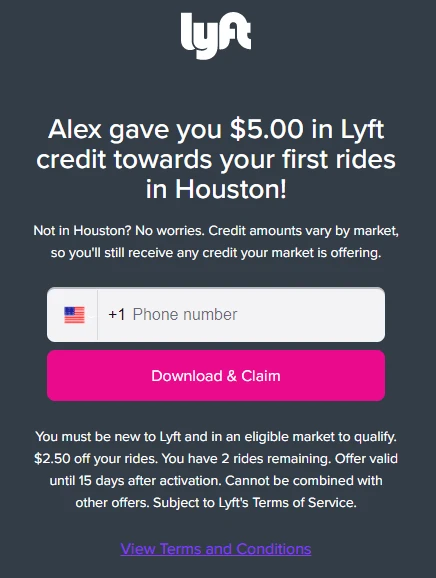
Givebutter, a fundraising platform, opts for cash rewards as well, but their referral prizes are much higher. For every referral that raises $1000 on the platform, the existing customer receives $100 in cash.
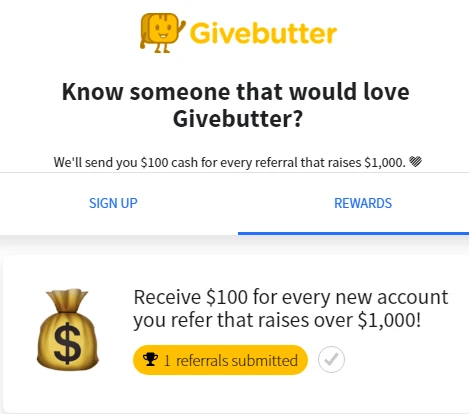
For e-commerce brands, you’ll typically see smaller rewards, ranging anywhere from $5 to $20 in single or double-sided referral systems. However, there are also companies who go the extra mile to get satisfied customers.
Casper, an e-commerce firm that sells mattresses, offers $75 Amazon gift cards to their customers when their referred friends purchase their first product using a personal referral link. The referred user also gets an incentive: 15% discount on their first order. Quite tempting!
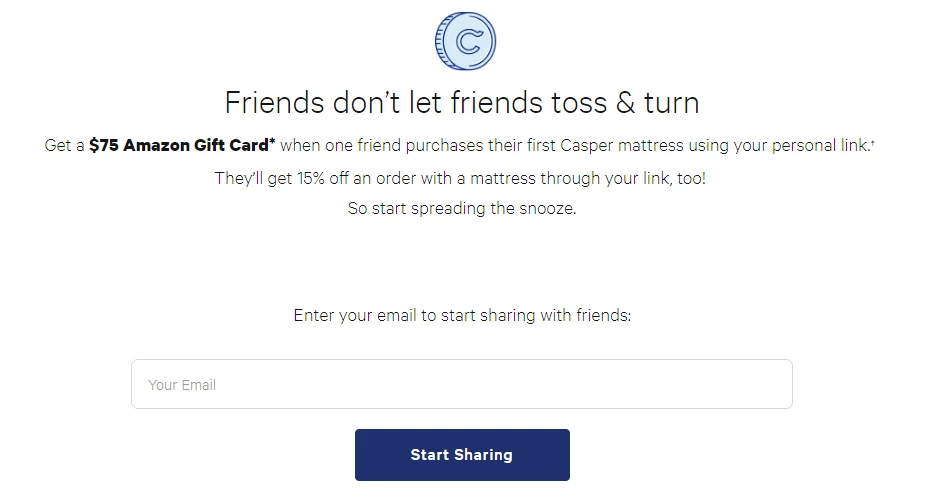
Instant reward referral programs are also used by financial service companies. An example is Willful, a B2C company that saw an incredible 300% increase in returns after implementing a referral program.
Their incentives are also double-sided: the customers receive $10 in Amazon gift cards, while the referred potential customers get $20 off any Willful plan. The company offers financial services, and their referral program encourages professionals to refer their clients to this innovative online will solution.
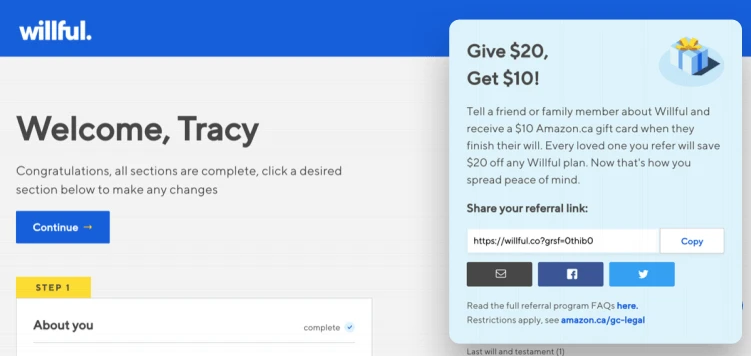
Finally, ASOS, a popular e-commerce clothing brand, offers discounts as referral rewards. Both the referral and the friend receive 15% off when buying from the ASOS online store, so it’s a win-win situation.
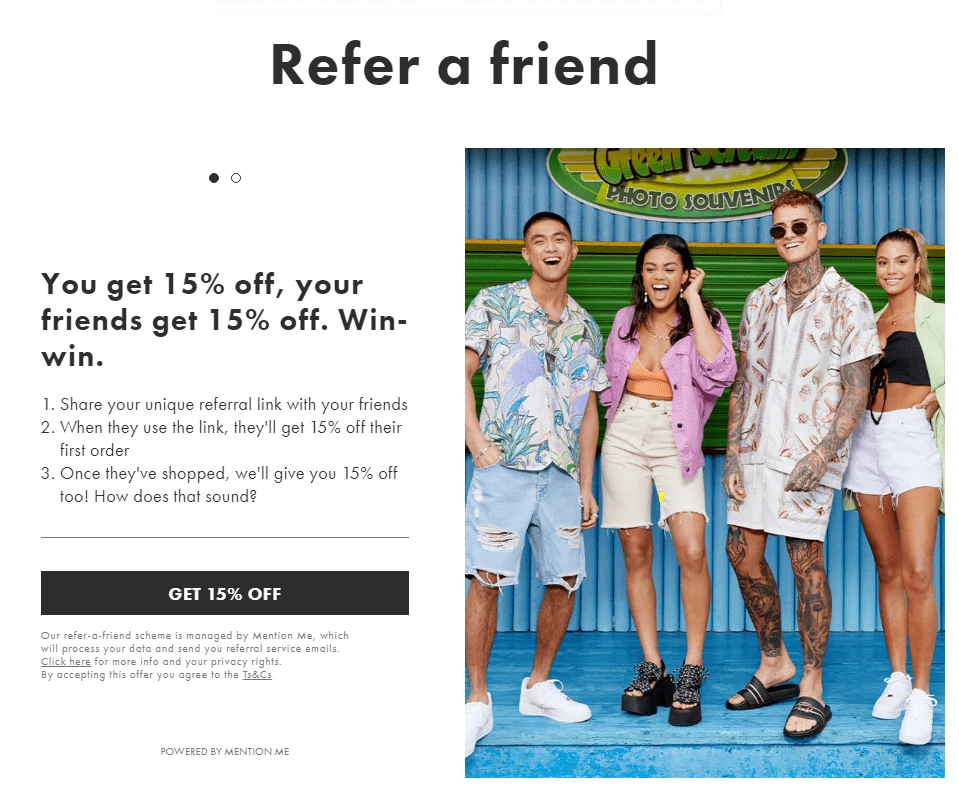
This first type of referral program is suitable for virtually any industry and company profile.
By offering customers a personalized referral link that they can share on social media, you increase your chances of getting brand mentions and referral traffic—without additional marketing investments.
2. Goal-based referral rewards or milestone rewards
Some businesses use referral marketing programs that are goal-based. These use milestone rewards and offer incentives such as cash or brand swag to existing customers who refer their friends.
Discord is one example of a company who implemented a goal-based, successful referral program in its early days. They created a leaderboard reward system coupled with free access to their service and cash prizes for top referrers. This strategy helped the startup to accelerate its user acquisition by conquering the gaming community.
Examples of goal-based rewards
Goal-based or milestone referral programs are also popular across different industries, being used by B2B and B2C companies alike.
Uptick, for example, a finance newsletter, experienced 33% growth after adding a referral system to their digital marketing strategy. Similar to other online businesses, Uptick acquires most of their subscribers through online marketing channels.
Their referral system rewards users with brand swag for every 5 referrals. While this can seem like a risky strategy, milestone and leaderboard systems are actually quite successful in attracting new customers and referrals.
Morning Brew used a similar strategy to reach 2.5 million subscribers, so it’s definitely a referral program worth diving into if you’re looking to expand your customer or subscriber list.
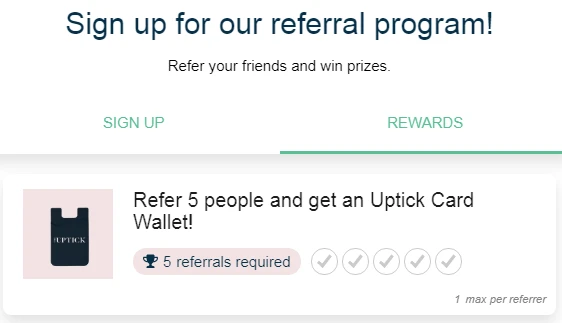
Zenefits, a human resources software company, uses a slightly different goal-based system. Their referral program offers cash rewards based on the number of employees of the referred firms. For instance, if the referred firm has between 11 and 50 employees, the referral receives $250 in cash!
To make their referral program stand out, Zenefits uses a dedicated landing page, but you can also opt for promoting your referral scheme through pop-ups, social media campaigns or newsletters.
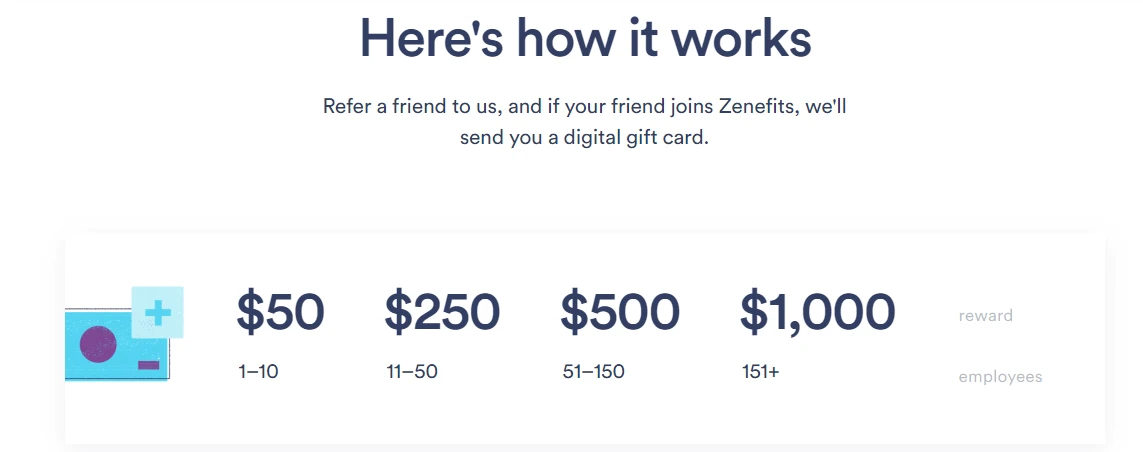
3. Waitlist referral systems
A waitlist system offers early access to a product or service for all users who refer their friends. Birchbox is another example of a company that grew with the power of word-of-mouth. They opted for a waitlist system.
This strategy proved to be extremely successful, as the initial list of 40 friends who were asked to test the beta version of the product generated no less than 3000 subscribers on the waiting list. As a result, Birchbox launched with an enthusiastic user base of 660 members!
Their current referral program uses a variety of rewards, including the ones already mentioned.

The secret behind the success of such techniques lies not only in the offer, but also in the messaging used.
For example, What’s Next, a career advice service company, shows subscribers the number of people that are in front of them—in the “virtual” queue.
Now, imagine that this would be an offline situation, and you would really want to get access to the service faster. You’d definitely start telling your friends about the offer if you knew that 5 referred friends can push you closer to the top of the list!
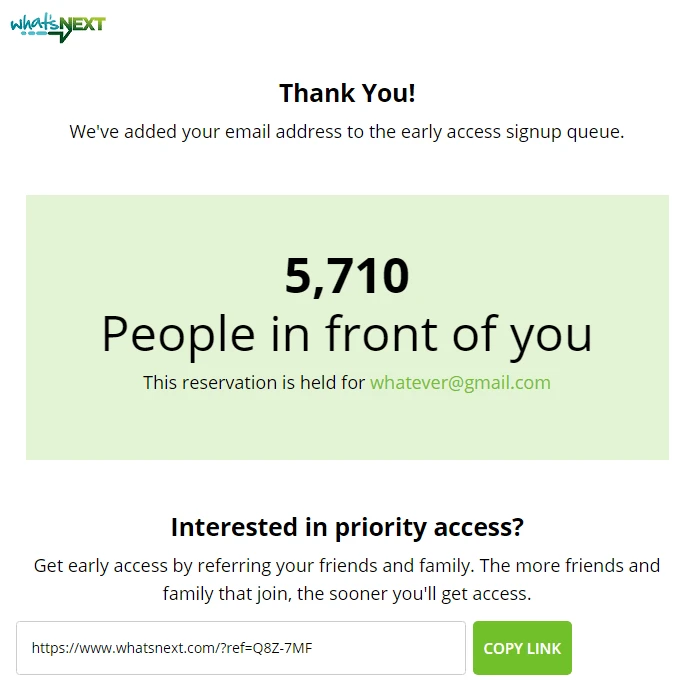
4. Referral contests and giveaways
Referral strategies can incorporate contests and giveaways. These are mostly single-sided and they tend to be more popular among B2C (Business to Consumer) brands.
For example, a company could host a giveaway on Instagram, where people have to follow them and tag three friends in the comments for a chance to win.
Which of these types of referral marketing is more likely to get you loyal customers and improve your retention rates? Let’s take a look at some real examples of referral programs and their use cases to find out!
Examples of contests and giveaways
You wouldn’t expect to see a referral contest in the dental industry, right? Wrong! Bluebird Orthodontics, a B2C service company, used this strategy to attract new customers.
They organized a contest offering a $500 prize to the winner, the condition being to refer at least one friend or family member.
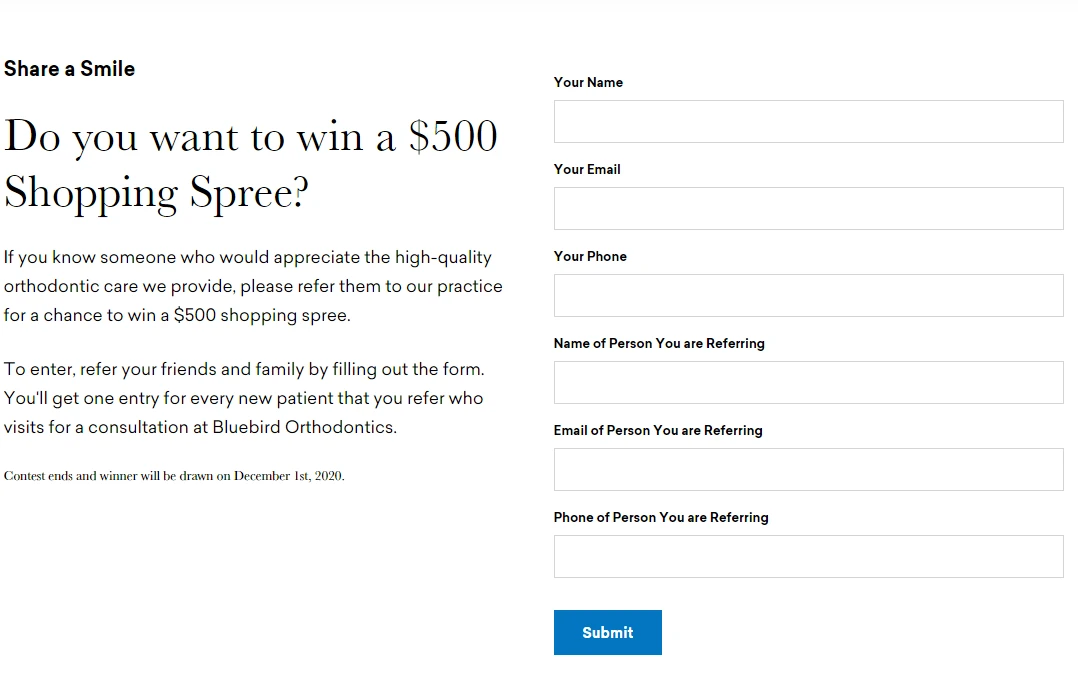
Let’s stay in the health niche and look at another example, this time coming from a fruit delivery service. FruitGuys ran a referral contest this summer, offering a $100 reward to the winner.
The prize was double-sided though: the referred friend was also offered a $10 prize, and the family and friends could get $10 off their next orders.
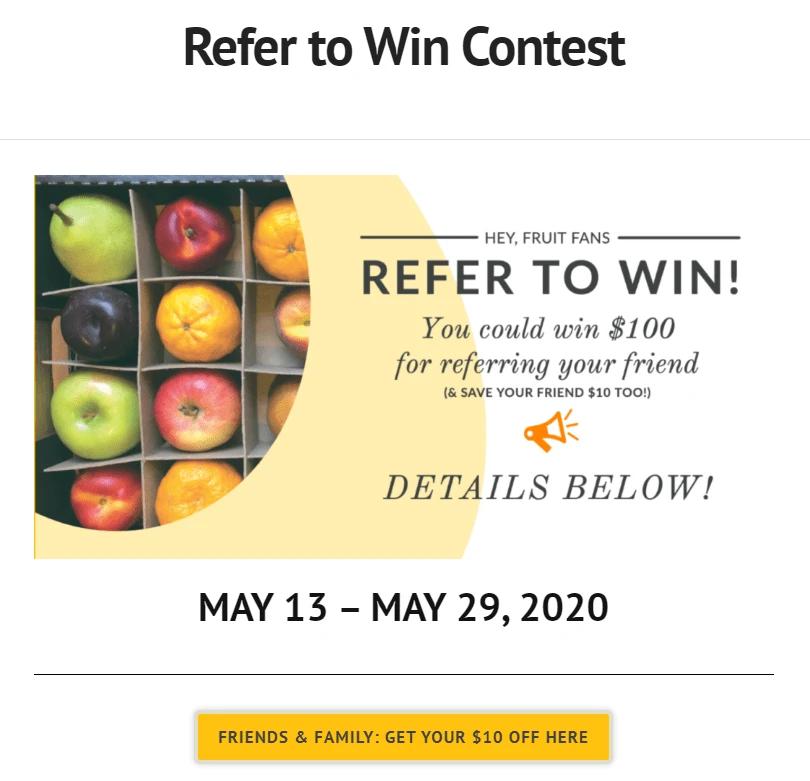
Similarly, Bhu Foods, an e-commerce company selling healthy snacks, used a contest to encourage happy customers to refer friends. The big prize was three months’ worth of Keto Bites supplies, significant enough for users to share the opportunity with other friends.
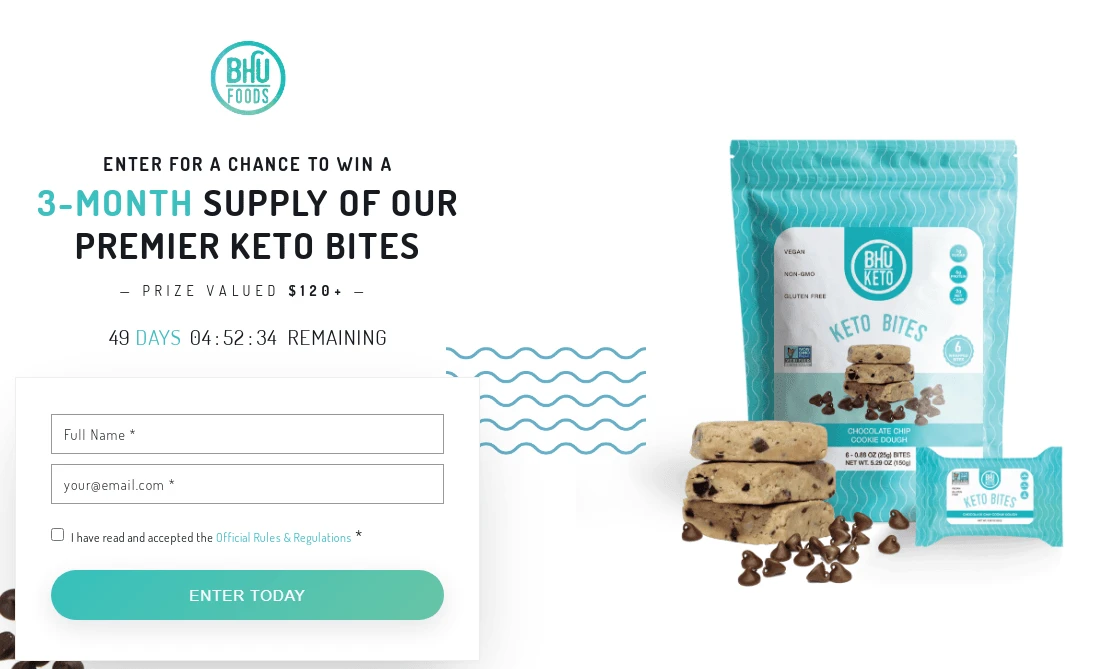
Finally, Samsung organized a referral contest where the big prize was a Galaxy Tab A8 device. Along with this referral reward for the winning customer, the company offered 8% discounts to the friends they referred.
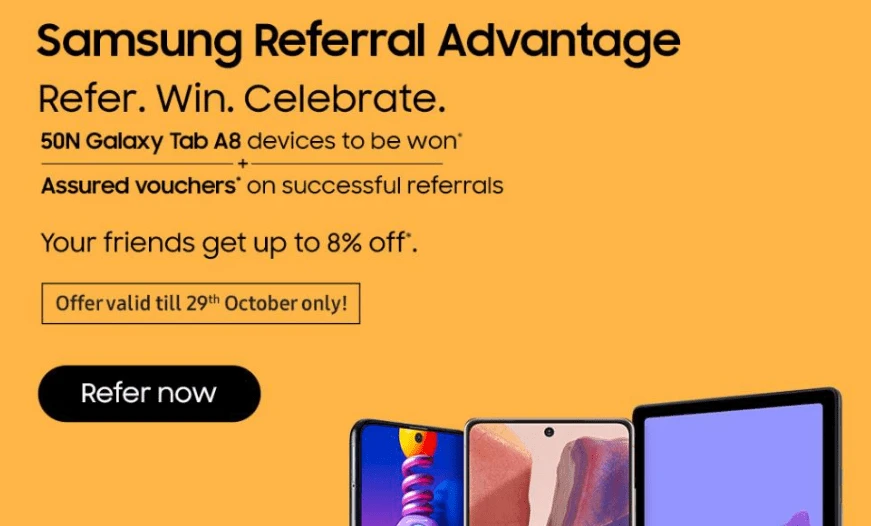
As you can see from these examples, there’s no rule when it comes to the industries or company profiles that can benefit from referral marketing programs.
Such initiatives are successful for both B2B and B2C brands and work across industry verticals, so if you don’t have a referral strategy in place yet, it’s definitely worth including it in your 2021 marketing plan!
Key takeaways
Referral marketing will help you to acquire new customers in a cost-efficient manner, and it’s suitable for most verticals and company profiles—from startups to well-established brands.
Given that people tend to trust recommendations from their family and friends more than they trust companies, using referral programs to spread the word about your products or services is a smart choice when looking to grow your business.
All you need in order to get started is to choose the type of referral marketing that you want to use, and then select a referral tool that fits your budget and needs.

Kevin is co-founder of GrowSurf, a top-rated referral software for tech startups and newsletter publishers. Their customers see 9-40% monthly growth, and he loves talking about all of the different strategies, tips, and tricks that have to do with referral marketing and growth.
